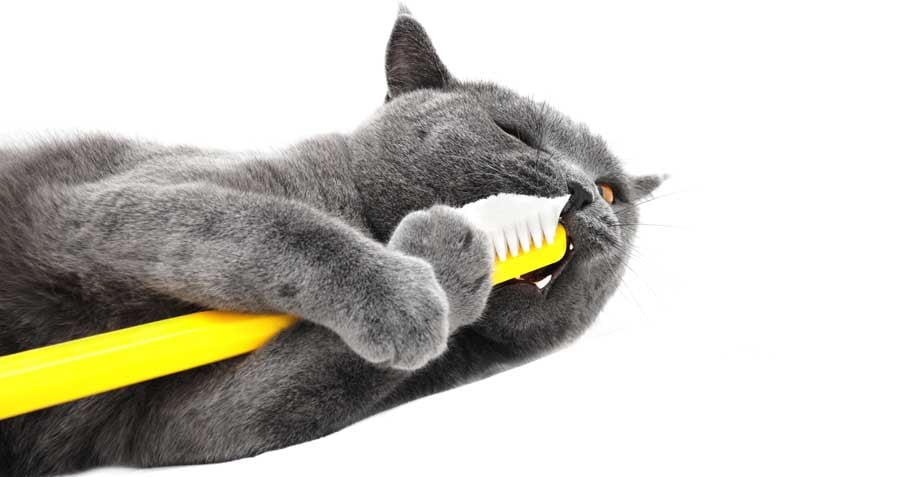Does this sound familiar to you? Your cat is ready for snuggling, purring contentedly, and you gently pull her face in for a nuzzle against your nose. Except, instead of a soft Eskimo kiss, you get two nostrils full of fish breath. Yuck!
Make no mistake; cats need their teeth brushed, just like humans. Surprised? Flustered and fearing for your fingers now that you know you'll need to polish those needle-sharp pearly whites? Not to worry—your comprehensive guide to brushing your cat's teeth (and saving your fingers) is here.
Brushing Your Cat's Teeth the Right Way
With some professional help and personal dedication from you, your cat's teeth can stay healthy—an important factor in keeping the rest of his body healthy. The ins and outs of feline dental health aren't very complicated luckily. It's important to note that, in addition to regular brushing, your cat should receive dental health checkups on a consistent basis from your veterinarian. Your cat's bad breath could be more than a result of the tuna she had for lunch; bacteria can cause disease that could ultimately affect your cat's lungs, heart, and kidneys.
Now, on to the four-step process to brushing your cat's teeth. You can purchase a cat toothbrush and feline toothpaste from your veterinary clinic or a pet store. Never use human toothpaste on your cat; this could be harmful to his or her digestive system.
Brushing Your Cat's Teeth:
- Get comfortable: It's best to start this interaction like any other, so your cat isn't immediately on guard. Pick your cat up, stroke her fur, and get her in a good position.
- Brush the top teeth: Using your free hand, gently lift your cat's lip on one side and begin brushing using soft downward strokes. Continue this process across all front teeth. Always brush away from the gum to dislodge any food particles.
- Brush the bottom teeth: Now, gently pull your cat's bottom lip down on one side and brush upward—again, away from the gum line.
- Offer water: You don't need to rinse your cat's mouth out after this process since feline toothpaste is meant to be ingested safely. Your cat may want a drink of water, however, after brushing.
It really is that simple.
Making Brushing a Routine
Ideally, your cat's teeth should receive a daily brushing. However, if your cat resists brushing—and there's a good chance he will—even two or three times a week will go a long way toward preventing disease and decay.
If your cat is bent on resisting your dental hygiene attempts, you can employ a few strategies to make things easier on yourself. Here are some tips.
- Wrap your cat in a towel before brushing, preventing escape
- Mix your cat's toothpaste with chicken broth or tuna at first to make it more attractive—but be sure to brush eventually with only toothpaste to accomplish the task
- Ask your veterinarian to show you techniques and tricks at your cat's next checkup
Is your cat due for a dental visit? Your first exam with us is free, so take care of your cat's dental health by scheduling your visit today!
